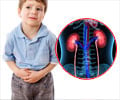Kids with developmental, communication, or physical disabilities faced triple the chances of being restrained compared to those without such disabilities.

Characteristics of Pediatric Behavioral Health Emergencies in the Prehospital Setting
Go to source)
Frequency of Pediatric Behavioral Health Emergencies in Ambulance Transport
“Our study found that pediatric behavioral health emergencies requiring an ambulance were much too frequent,” said senior author Jennifer Hoffmann, MD, MS, emergency medicine physician at Ann & Robert H. Lurie Children’s Hospital of Chicago and Assistant Professor of Pediatrics at Northwestern University Feinberg School of Medicine. “And yet, there are no national guidelines for EMS personnel to manage these patients. We found considerable variation in the use of sedative medications and restraints across different parts of the country. There is a great need for standardized EMS protocols for pediatric behavioral health emergencies. Currently only four states have these available.”Challenges in Pediatric Sedation Protocols
“EMS personnel are likely less comfortable with weight-based dosing of sedative medications and EMS agencies in most states don’t have pediatric-specific sedative protocols, which might contribute to the increased use of physical restraints for younger children while in the ambulance,” said Julia Wnorowska, medical student at Northwestern University Feinberg School of Medicine and first author on the study.‘In 2019-2020, more than 10% of kids taken to hospitals in ambulances had behavioral health emergencies. #mentalhealth #autistickids #behavioralhealth ’





“Also, protocols for EMS personnel are needed to help manage children with autism spectrum disorders and other neurodevelopmental disabilities. Specific interventions could be developed to prevent and reduce agitation in this population, such as personalized emergency information forms that delineate patient-specific triggers and de-escalation techniques.” “Future research should determine whether the use of restrictive interventions can be reduced, while simultaneously promoting staff safety, through strategies such as education and adoption of pediatric-specific protocols,” said Dr. Hoffmann, who also is the Children's Research Fund Junior Board Research Scholar.
Reference:
- Characteristics of Pediatric Behavioral Health Emergencies in the Prehospital Setting - (https://onlinelibrary.wiley.com/doi/10.1111/acem.14833)















